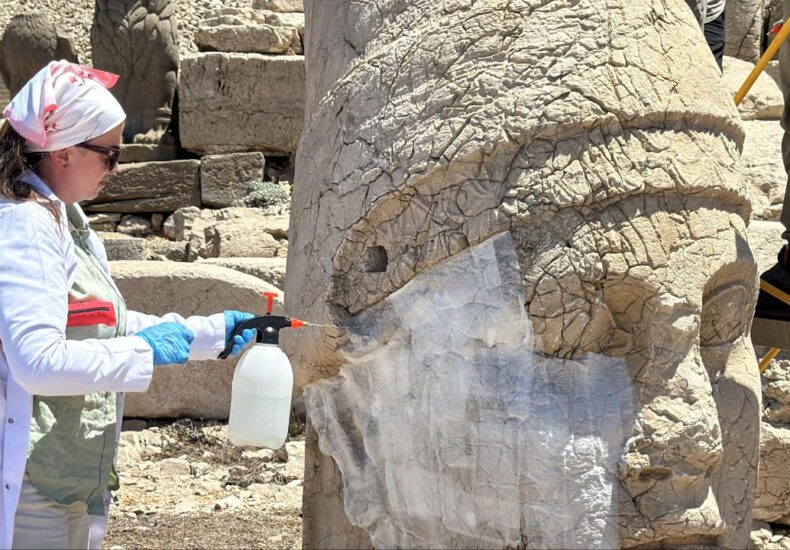
Nano Lime Technology Strengthens Giant Statues on Mount Nemrut
The monumental statues atop Mount Nemrut, a UNESCO World Heritage Site, are undergoing advanced conservation efforts using nano lime technology. Initiated in 2022, the restoration work has yielded promising results, leading to the expansion of the project in 2025.
Located at an altitude of 2,206 meters, Mount Nemrut hosts colossal stone sculptures that have endured centuries of harsh environmental conditions. To address the micro-cracks forming on their surfaces and internal structures, experts began applying nano-dispersed calcium hydroxide solutions. Following successful trials, the project now focuses on the iconic Eagle Head and King Antiochus I statues on the western terrace.
A Blend of Technology and Preservation
In the initial phase, layers of dirt and grime are meticulously removed from the statue surfaces. Then, the nano lime solution is carefully injected into the cracks using syringes. This not only strengthens the stone from within but also prevents water infiltration caused by rain and atmospheric conditions.
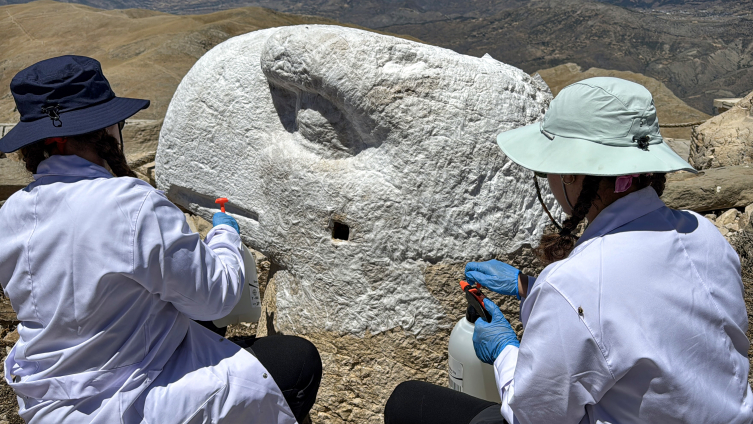
The method is designed to maintain the natural appearance of the stones, allowing visitors to experience the statues in their original form. The restoration phase is expected to take approximately one month, focusing on sustainable conservation without compromising historical authenticity.
📣 Our WhatsApp channel is now LIVE! Stay up-to-date with the latest news and updates, just click here to follow us on WhatsApp and never miss a thing!!
Expanded Restoration in 2025
Ayşe Ebru Çorbacı, Director of the Gaziantep Regional Laboratory for Restoration and Conservation, stated that a test application on the Heracles statue in 2022 had shown effective results:
“After observing the success of the pilot project, we planned a comprehensive restoration for 2025. Our goal is to strengthen the structural integrity while preserving the aesthetic features of the statues. The cracks won’t be completely filled, allowing the original forms to remain visible.”
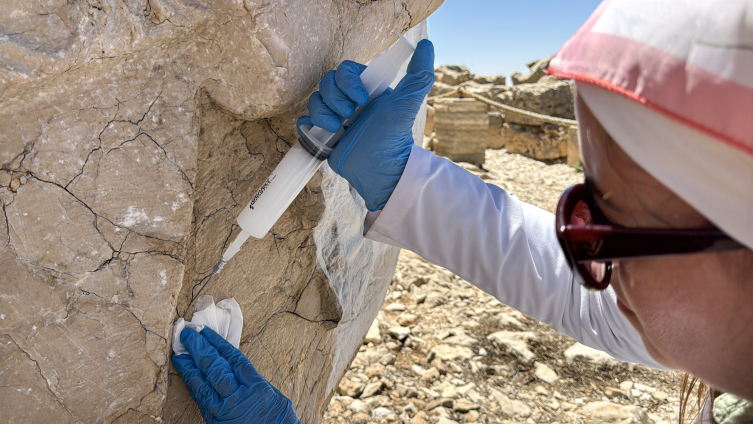
Protecting Cultural Heritage for Future Generations
Mehmet Alkan, Director of the Adıyaman Museum, emphasized the long-term goal of the project:
“With these techniques, we aim to ensure that Mount Nemrut’s iconic monuments endure for generations to come.”
This initiative stands as a pioneering example of combining modern nano-technology with heritage preservation, highlighting Turkey’s commitment to protecting its archaeological treasures while promoting sustainable tourism.
Mount Nemrut: The Summit Where Gods Face the Sun
Mount Nemrut, located in southeastern Türkiye’s Adıyaman Province, is one of the most iconic archaeological sites in the world. Standing at 2,206 meters above sea level, the mountain is renowned for the giant statues and monumental tomb built by King Antiochus I of Commagene in the 1st century BCE. The site was inscribed on the UNESCO World Heritage List in 1987 due to its unique fusion of Greco-Persian art and its historical significance. The statues of gods, animals, and the king himself face the sunrise and sunset, attracting thousands of visitors and researchers each year.
You may also like
- A 1700-year-old statue of Pan unearthed during the excavations at Polyeuktos in İstanbul
- The granary was found in the ancient city of Sebaste, founded by the first Roman emperor Augustus
- Donalar Kale Kapı Rock Tomb or Donalar Rock Tomb
- Theater emerges as works continue in ancient city of Perinthos
- Urartian King Argishti’s bronze shield revealed the name of an unknown country
- The religious center of Lycia, the ancient city of Letoon
- Who were the Luwians?
- A new study brings a fresh perspective on the Anatolian origin of the Indo-European languages
- Perhaps the oldest thermal treatment center in the world, which has been in continuous use for 2000 years -Basilica Therma Roman Bath or King’s Daughter-
- The largest synagogue of the ancient world, located in the ancient city of Sardis, is being restored

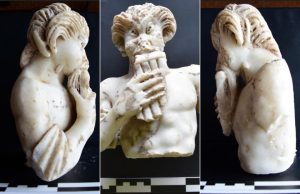
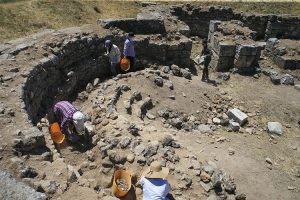
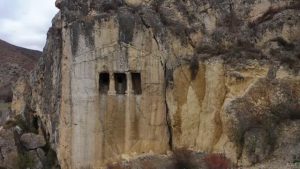
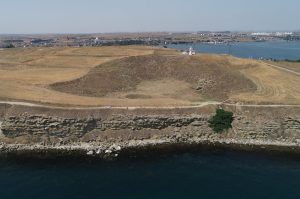
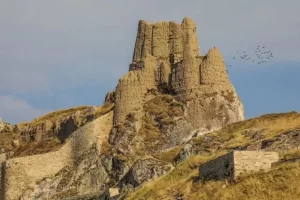
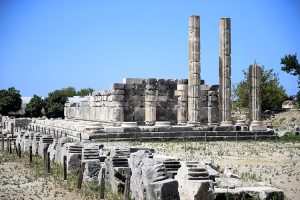
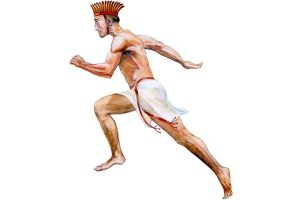

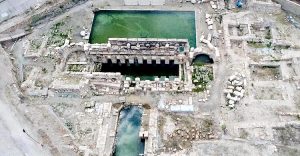
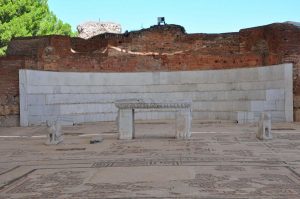
Leave a Reply